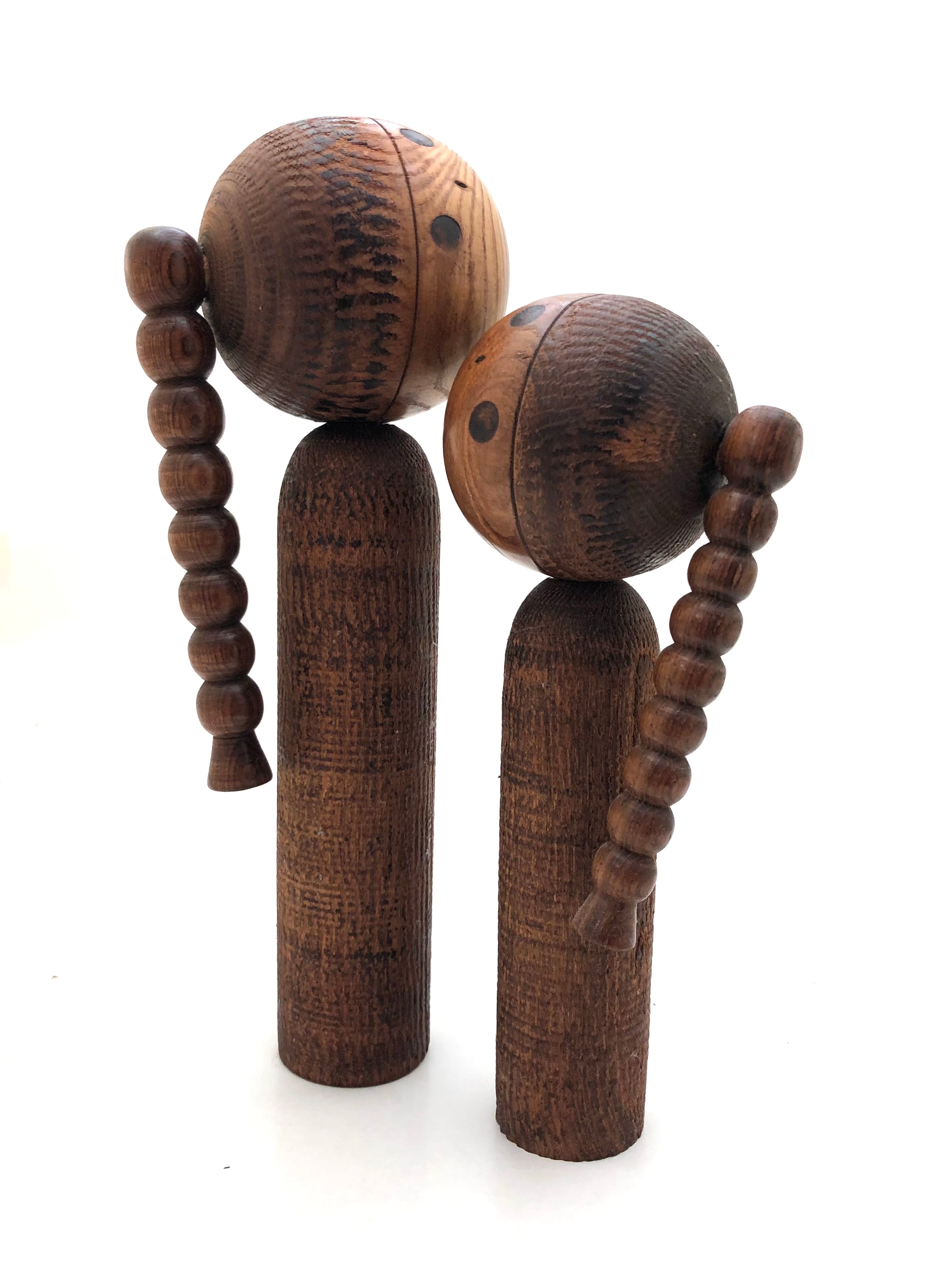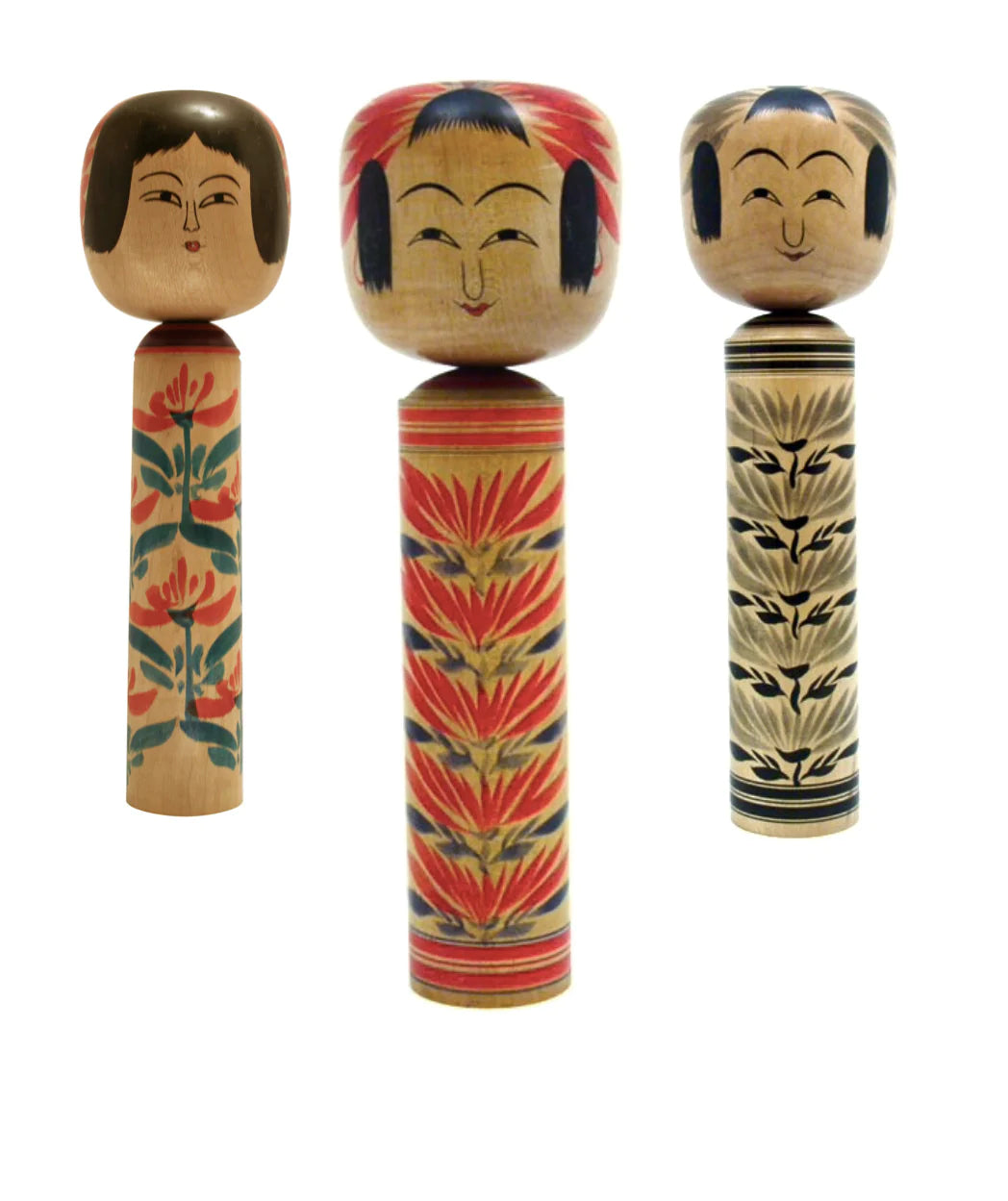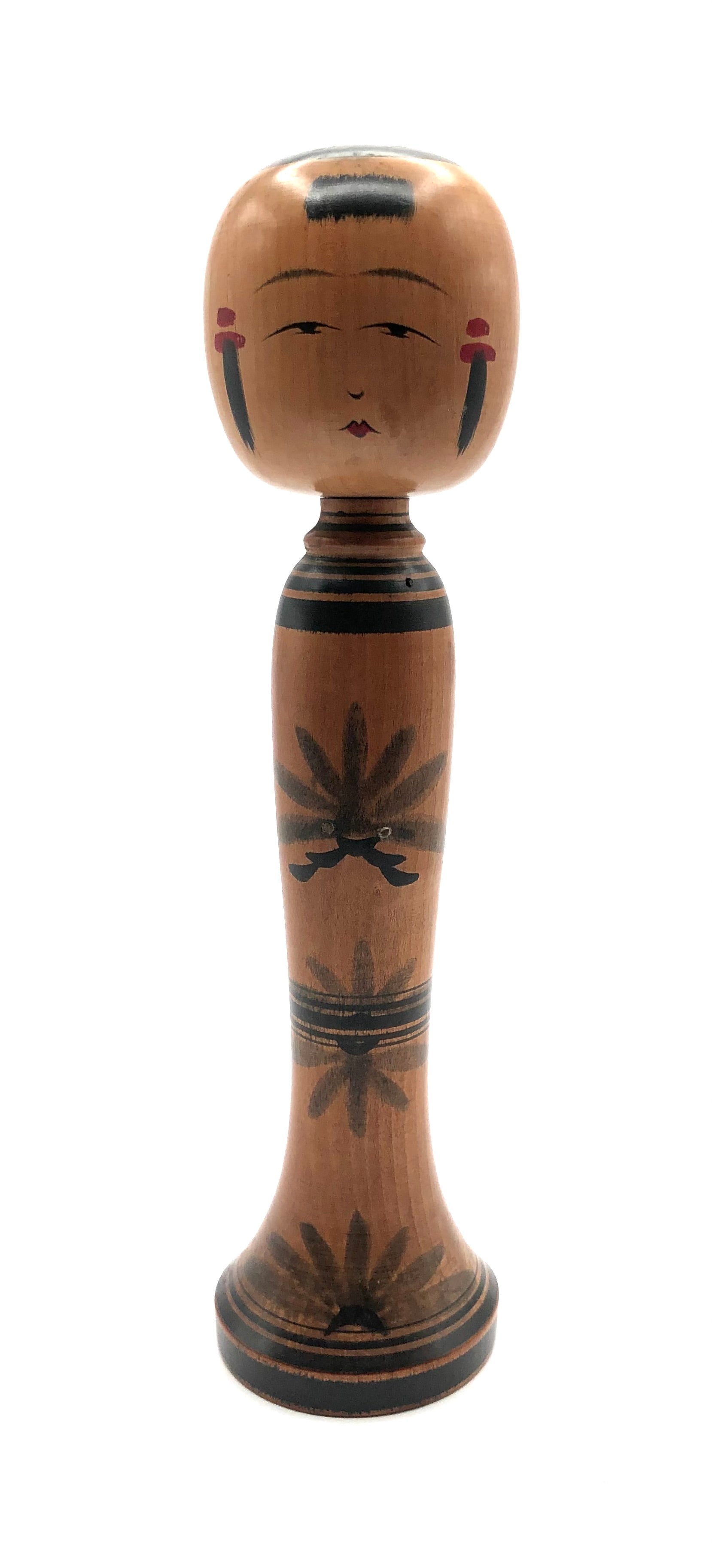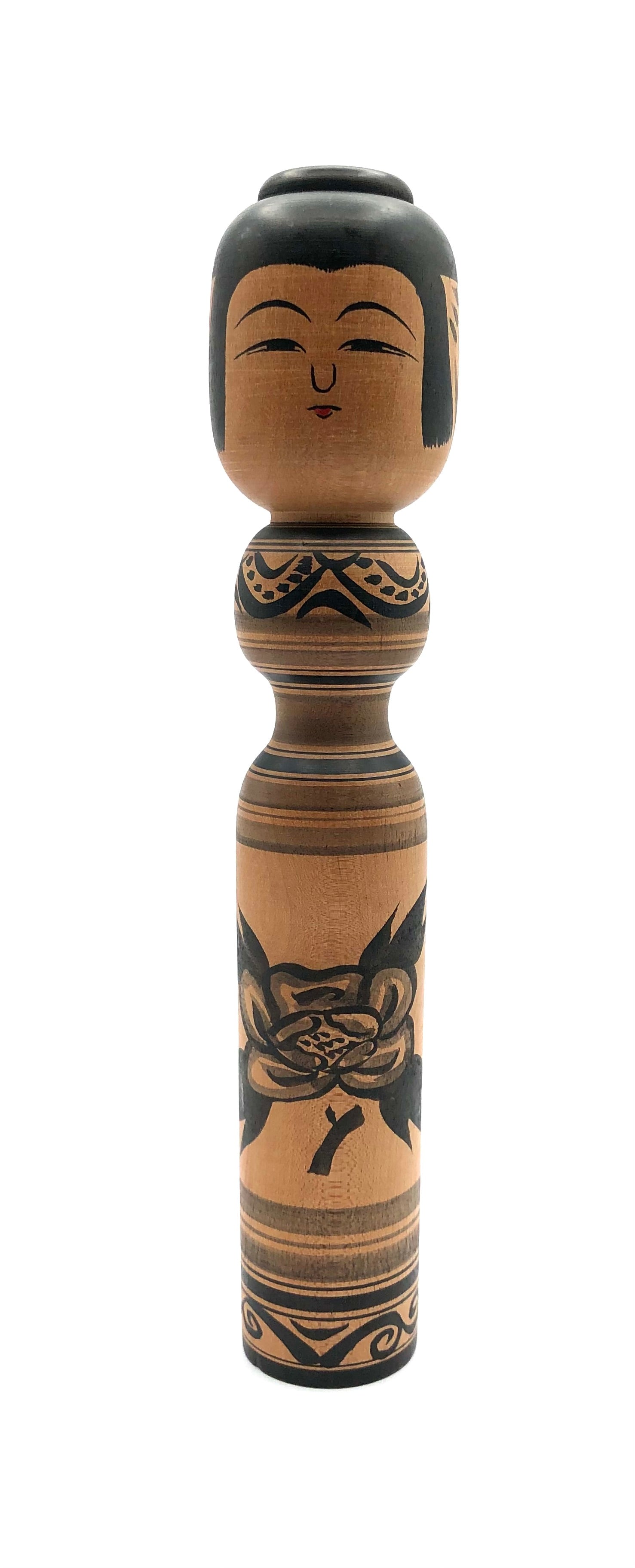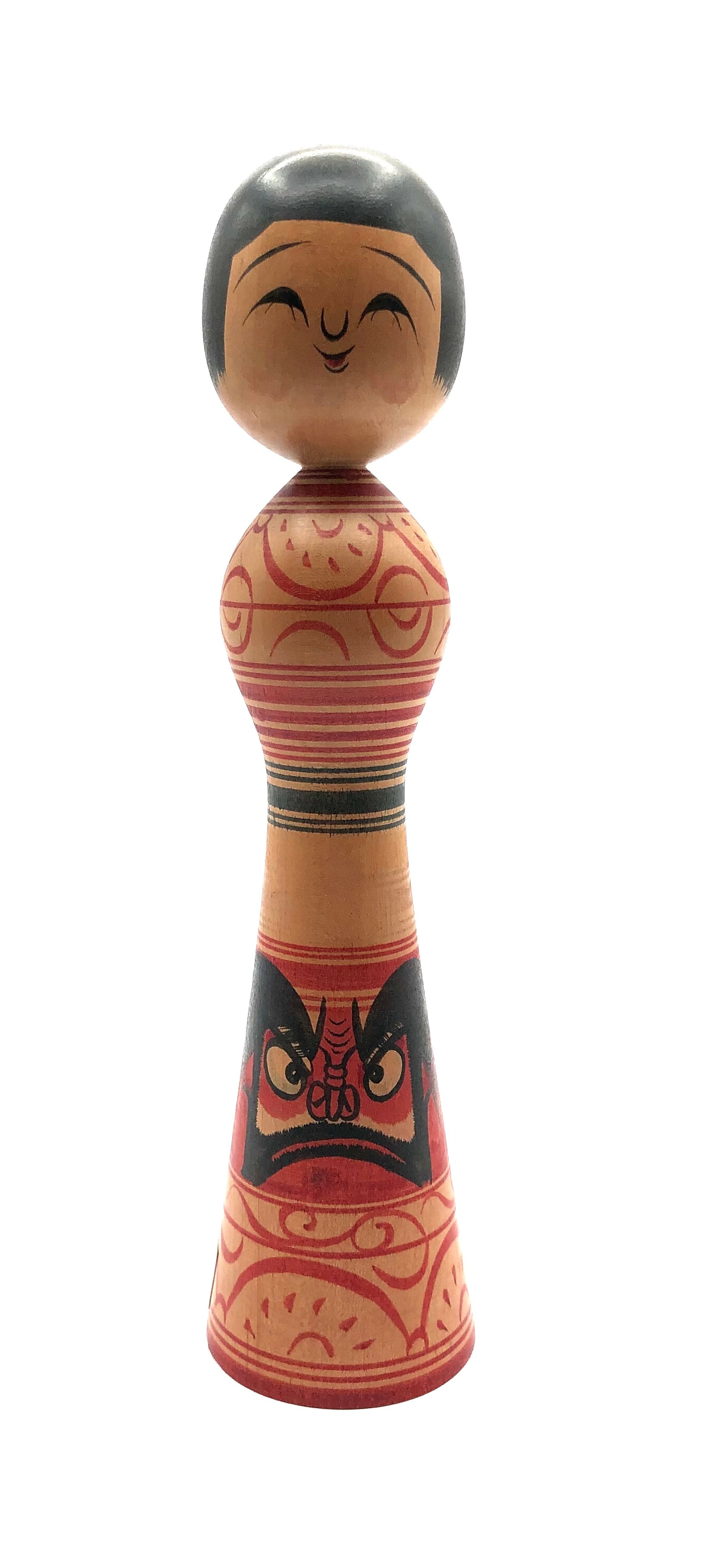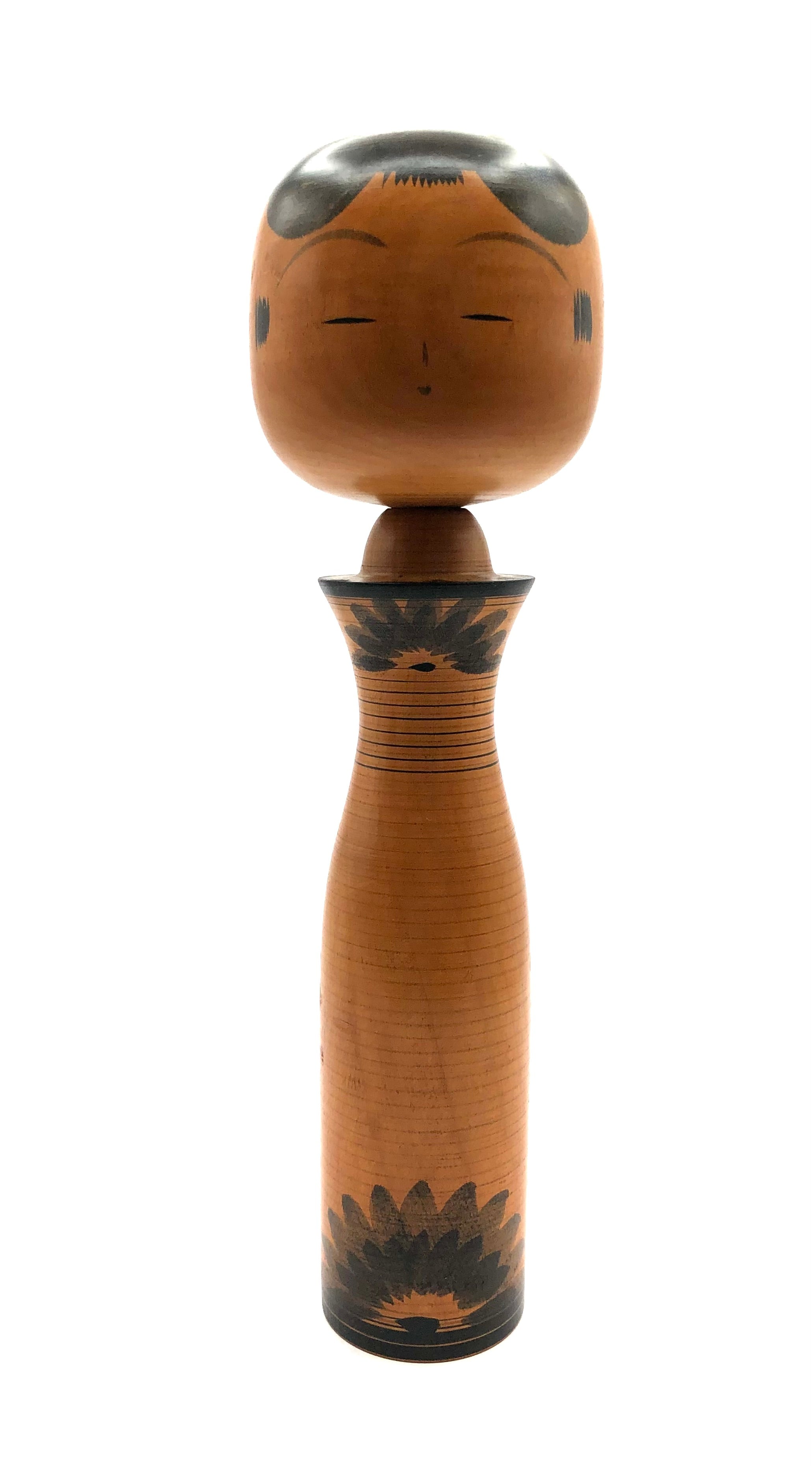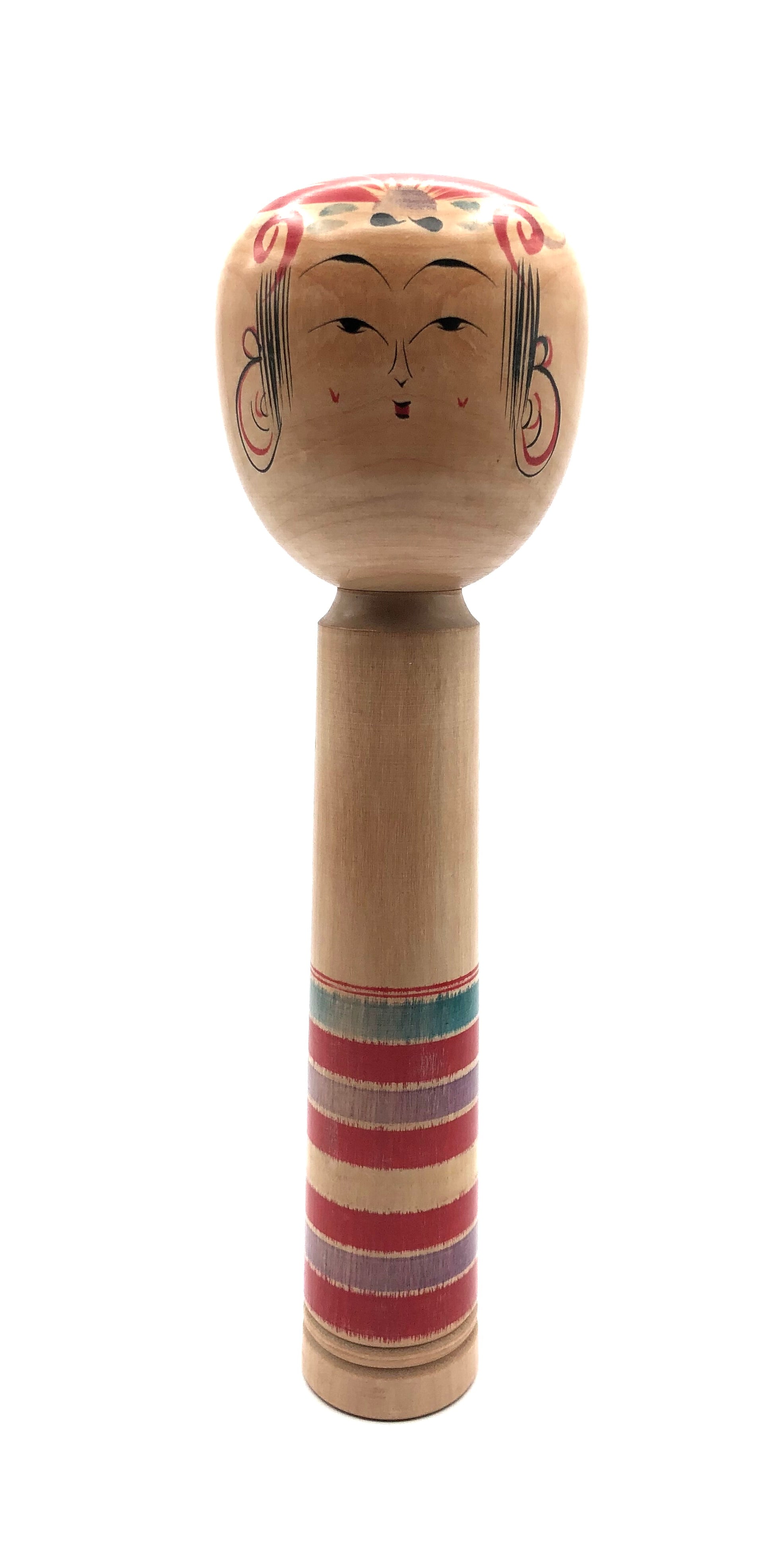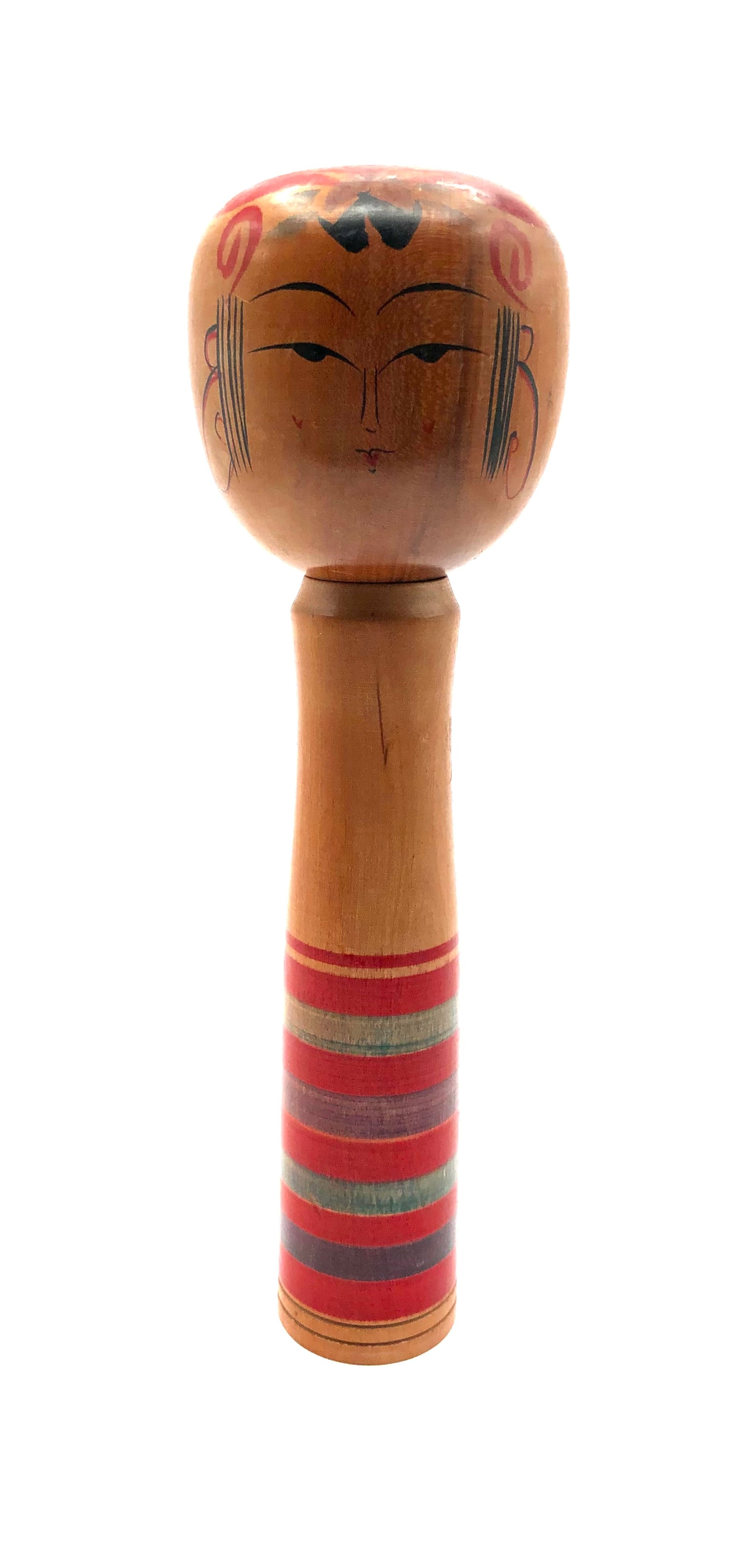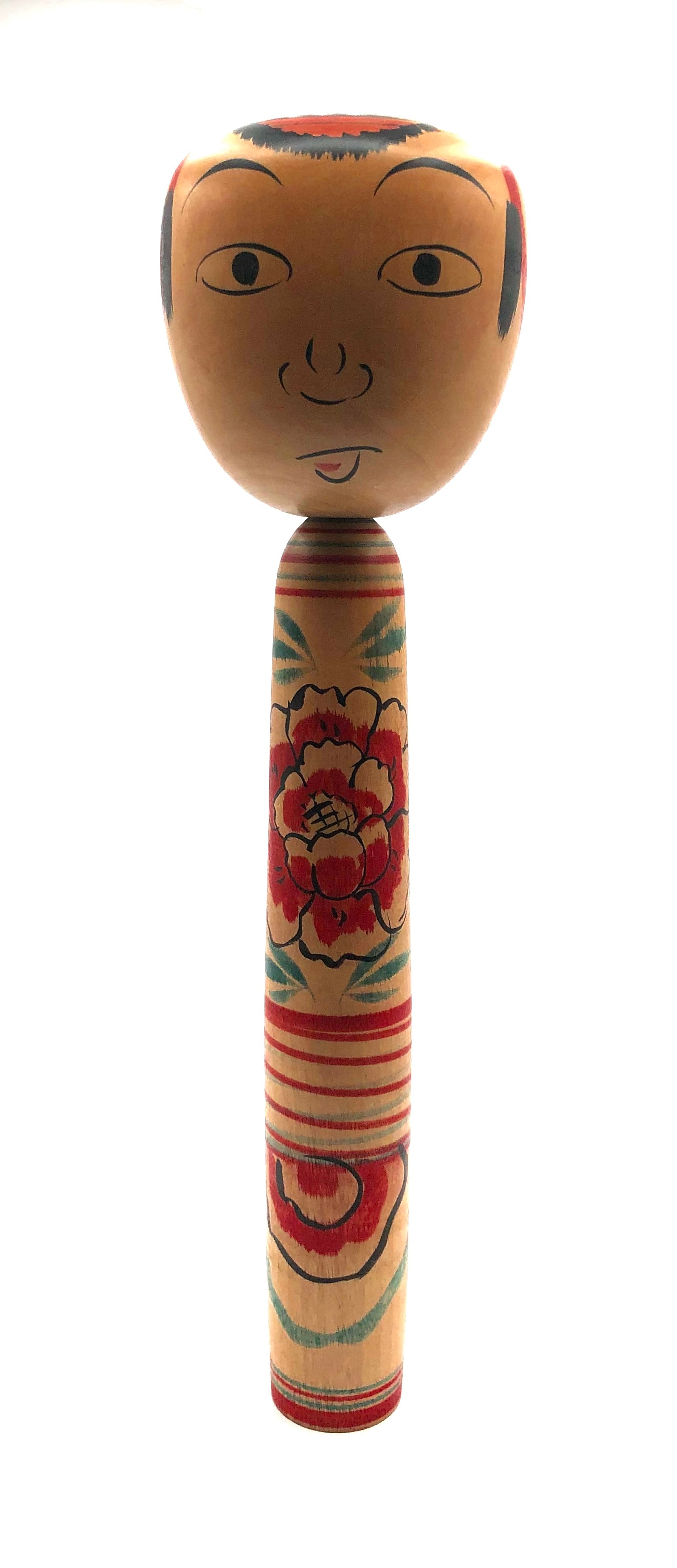Kokeshi Dolls - An In-Depth Guide
Introduction to Japanese Kokeshi Doll History
Traditional Kokeshi: The Families

The history of the traditional Kokeshi originated in the early 1800s, in the northern region of Japan known as Tohoku, an area comprised of six prefectures (Ken): Aomori, Akita, Iwate, Yamagata, Miyagi, and Fukushima. Miyagi is thought to be the actual birthplace of the Kokeshi doll, which is now considered the archetypical doll form of Japan. They were created to satisfy the desire of children to have something with which they could play as well as incorporating historical elements that parents wanted to pass on to their children. For a doll reduced to its simplest form, there are a wonderful range of variations on the spherical/cylindrical theme produced by the artists, with very distinctive facial features, head and body shapes, and painted patterns. These variations reflect the styles of the six different prefectures and the ten/eleven families historically associated with the making of these traditional Kokeshi wooden dolls.
Sosaku Kokeshi: The Artists

The advent of the ‘Sosaku, (Creative), type of Kokeshi in the first half of the 20th/c, brought a global awareness to, and a renewed appreciation of, the Kokeshi doll. The art of Sosaku, (Creative), and modern Kokeshi doll-making began in the early 1940s, grew and flourished in the 1950s through the 60s, and continued well into the 70s. This 30-plus-year period produced the greatest, most enduring, and the most popular artists of the genre, with many of them gaining international recognition. The mid-50s saw the movement go beyond the few, early craftspersons of the previous decade and explode into a guild of talented wooden doll makers throughout the main island of Japan. Utilizing beautifully-grained woods available to the Kiji-shi, (wood workers), all over Japan’s northern regions, artists from backgrounds as varied as fine arts, lacquerware, painting, photography, textile design, and even chemistry and engineering, began infusing their own personalities into their dolls, allowing for immediate acceptance by a diverse national and international audience.
Kokeshi Birthplace
Tohoku and Gunma
Kokeshi are 'created' by artists and craftspeople, and have features and styles unique to their own particular artist, craftsperson, local culture and region. The majority of Traditional Kokeshi come from the Tohoku region, while Creative, (Sosaku), Kokeshi were, and are, primarily made in Gunma prefecture.
Mingei Arts' collection of Traditional and Creative antique Kokeshi dolls were acquired beginning in 1998 after numerous visits to the wood carvers’ studios, associated retail shops, and onsens. As long time researchers and collectors of Japanese folk art we have found that Kokeshi and Kokeshi inspired toys continue to imbue a spiritual significance from their original beginnings.


Sosaku Kokeshi: A New Look at an Old Tradition
The art of Sosaku, (Creative), and modern Kokeshi doll making began in the early 1940s, grew and flourished in the 1950s-60s, and well into the 70s. Kokeshi represent a measure of the spirit-infused status of the wood, and they are believed to retain the material’s original sacred and natural qualities. ‘Kokeshi’ made in other countries, (China, Korea, etc.), are not Kokeshi, and do not represent the spirit from which they were conceived.
After Japan gave access to Western ideas, many Creative Kokeshi artists wanted to honor the carving tradition, but did not want to follow traditional family designs. The Japanese use the term ‘Mottainai’, which was originally a Buddhist word that referred to the “essence of things.” Applied to everything in the physical universe, the word suggests that objects do not exist in isolation but are intrinsically linked to one another. ‘Mottainai’ is also an expression of sadness for the disrespect that is shown when any living or non-living entity is wasted. Thus we find the Sosaku artists focusing on a new visual approach to the creation of the Kokeshi doll, reinforcing of the important part that forests play in the daily life of the people.
The images represented in Japanese Sosaku Kokeshi carving typically fall into one of three categories: iconic scenes, significant themes and motifs in history and literature, and objects in everyday life, (e.g. kimono/yukata, children/baby, seasonal grasses/flowers). Additionally, the seasons have been celebrated in Japan for centuries, and have influenced design on all forms of art produced in that country. Kokeshi dolls are certainly no exception, as seasonal motifs and mythological subjects are carved and painted in a variety of methods on their bodies.
Through its early cultural ties with China, Japan has a long, rich tradition of poetry celebrating the seasons. Popular Haiku often appear on Kokeshi, enhancing the ornamentation of the dolls’ depiction of the season portrayed.
Ume (plum), and Sakura (cherry), blossoms herald the arrival of Haru, (Spring). Sama, (Summer), appears in the form of Ayame, (Iris), Take, (Bamboo), and even Matsuri, (Festivals). Aki, (Autumn), adorns Kokeshi through the paintings of Momiji, (Maple Leaves), in red, orange, and yellow colors, or Kiku, (Chrysanthemum), a very important symbol of autumn throughout the country. Fuyu, (Winter), shows up as snowy pine, (Yuki no matsu), heavy rain and snow coats, scarves, and head coverings, which in some cases almost dwarf the figure within. As much as Kokeshi represent memories, or moments in time, their ties to the four seasons are undeniable.
While a number of these artisans did apprentice under Traditional masters, the Sosaku Kokeshi artists showed exciting variety and imagination, for the dolls produced were larger in many cases, and were certainly more elegant. Many of them were created using more than one type of wood, with the various woods comprising the clothing and hair treatments; and with the application of different methods of carving, chiseling, “harmonic chatter-work”, (Birikan’na), and wood-burning techniques, the dolls were a far different type of Kokeshi than their Traditional predecessors.

Once the tourists visiting the area’s popular hot springs, during the long winters, wanted a token of their stay, the woodworkers began shaping and painting more attractive and culturally sensitive versions for sale, thus reinforcing the importance of both historical and contemporary impressions of motifs seen throughout history.
Japanese Names, Signatures & Seals

In more recent times, an artist’s signature has become the standard, if you will, and nowhere is this more prevalent than it is on Kokeshi dolls. One of the very few, if not the only, folk-art doll creations bearing signatures, Kokeshi artists have been signing their works since the appearance of the very first Traditional doll.
Japanese artists’ names, (surname first, given name second), appear as transcribed from the actual artwork or exhibition catalogues. The signatures of the artists on the dolls are ALWAYS unique, and artistically rendered. They are, in many instances, different than the Katakana. When the signature is shown, it shows the artist’s signature, maybe the apprentice name, studio and possibly the Onsen for clarification, and identification.


